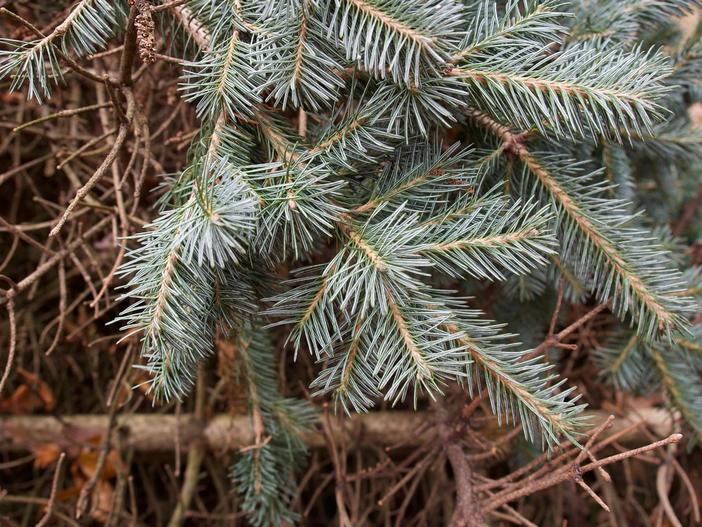Corkbark Fir
(Abies lasiocarpa var. arizonica)
Corkbark Fir (Abies lasiocarpa var. arizonica)
/
/

F. D. Richards
CC BY-SA 2.0
Image By:
F. D. Richards
Recorded By:
Copyright:
CC BY-SA 2.0
Copyright Notice:
Photo by: F. D. Richards | License Type: CC BY-SA 2.0 | License URL: https://creativecommons.org/licenses/by-sa/2.0/ | Uploader: F. D. Richards | Publisher: Flickr






















Estimated Native Range
Summary
Abies lasiocarpa var. arizonica, commonly known as the Corkbark Fir, is an evergreen conifer native to subalpine and montane habitats in the Southwestern United States, particularly in Arizona, New Mexico, and Colorado. It is adapted to high elevations, typically found at altitudes of 2,700 meters and above, where it experiences cool, moist conditions. This tree can reach heights of 25 to 45 meters, with a dense, conical form that becomes more columnar with age. The Corkbark Fir is notable for its smooth, gray to white bark that resembles cork, and its short, blue-green needles that contribute to its ornamental value.
The Corkbark Fir is valued for its striking appearance and is often used in landscape design in cold climates, where its frost tolerance and unique bark texture can be showcased. It is also popular as a Christmas tree due to its symmetrical shape and attractive foliage. In cultivation, it requires well-drained, acidic soil and benefits from full sun to partial shade conditions. While it is generally low-maintenance, it can be susceptible to pests such as bark beetles and diseases like fir engraver. Gardeners should be aware of its potential to grow quite large, making it more suitable for spacious landscapes.CC BY-SA 4.0
The Corkbark Fir is valued for its striking appearance and is often used in landscape design in cold climates, where its frost tolerance and unique bark texture can be showcased. It is also popular as a Christmas tree due to its symmetrical shape and attractive foliage. In cultivation, it requires well-drained, acidic soil and benefits from full sun to partial shade conditions. While it is generally low-maintenance, it can be susceptible to pests such as bark beetles and diseases like fir engraver. Gardeners should be aware of its potential to grow quite large, making it more suitable for spacious landscapes.CC BY-SA 4.0
Plant Description
- Plant Type: Tree
- Height: 20-60 feet
- Width: 10-20 feet
- Growth Rate: Slow
- Flower Color: N/A
- Flowering Season: Non-Flowering
- Leaf Retention: Evergreen
Growth Requirements
- Sun: Full Sun, Part Shade
- Water: Medium
- Drainage: Medium
Common Uses
Border Plant, Low Maintenance
Natural Habitat
Subalpine and montane habitats in the Southwestern United States
Other Names
Common Names: Arizona Corkbark Fir , Arizona subalpine fir
Scientific Names: Abies lasiocarpa var. arizonica , Abies arizonica , Abies arizonica subsp. pendula , Abies balsamea var. arizonica , Abies bifolia var. arizonica , Abies lasiocarpa subsp. arizonica , Pinus beissneri
GBIF Accepted Name: